In the dynamic field of architecture, having a powerful laptop that can keep up with the demands of Autodesk Revit is essential. As we step into 2024, the technology landscape has evolved, offering a variety of laptops that not only meet but exceed the requirements for running advanced BIM software like Revit. Whether you’re a student, a professional architect, or someone involved in detailed building modeling, the right laptop can significantly streamline your workflow.
Recognizing the need for up-to-date information, we’ve refreshed our guide to include the latest laptops perfect for Revit. Our selections are based on a comprehensive evaluation of key features such as processor capabilities, graphics performance, memory, storage, display quality, and portability.
Before diving into the detailed reviews, here’s a quick glance at our top picks for 2024, complete with jump links to their in-depth analysis:
| Rank | Make / Model | Best For |
| 1. | Lenovo Legion Pro 7i | Best for Advanced Projects |
| 2. | Acer Predator Helios 300 | Best for Performance and Screen Size Balance |
| 3. | ASUS TUF Dash 15 | Best Mid-Range |
| 4. | Microsoft Surface Pro 7 | Best for Portability and Flexibility |
| 5. | Asus ROG Strix G16 | Best for High-End Performance |
| 6. | MSI P65 Creator | Best for Creative Professionals |
| 7. | Dell XPS 17 | Best for Large-Scale Projects |
Now let’s talk about what Revit requires vs what you need to require in a laptop for school.
Key Requirements for Running Revit
Based on the system requirements provided by Autodesk for Revit 2022, here are the crucial factors to consider:
Operating System: Revit requires a 64-bit version of Microsoft Windows 10. Compatibility with the operating system is essential for smooth running of the software.
Processor: A 64-bit processor with multiple cores is recommended. For complex models, at least 8 cores are advised. The more cores and the higher the clock speed, the better the performance, especially in rendering tasks.
Memory (RAM): The minimum RAM requirement is 16 GB, but for handling larger, more complex models, 32 GB or more is recommended. Adequate RAM ensures smoother multitasking and efficient handling of large files.
Graphics Card: A DirectX 11 capable graphics card with at least 2 GB of VRAM is necessary. For more detailed and complex models, a card with 4 GB of VRAM or more is advisable. Dedicated graphics cards are preferred over integrated ones for better rendering and visualization performance.
Storage: Solid State Drives (SSD) are recommended for faster data access speeds. A minimum of 8 GB of free space is required, but having more storage is beneficial for storing large project files.
Display: A high-resolution display (at least 1920 x 1080) is important for detailed architectural work. Better color accuracy and a larger screen can improve the overall working experience.
Additional Considerations for Students
Budget: Students often have a limited budget, so it’s important to balance cost with the specifications needed for Revit.
Portability: As students frequently move between classes, studios, and home, a lighter and more compact laptop can be more practical.
Battery Life: Longer battery life is beneficial for students who spend long hours in classes or libraries where power outlets may not always be available.
Durability: A robust build quality can withstand the rigors of student life.
Future-Proofing: Selecting a laptop with slightly higher specifications than current needs can be a wise choice for future software updates and more complex projects in later years of study.
By keeping these requirements and considerations in mind, architecture students can select a laptop that not only runs Revit efficiently but also fits into their academic and lifestyle needs. Now, let’s explore the detailed reviews of each recommended laptop for 2024.
1. Lenovo Legion Pro 7i

Pros
- Exceptional Performance: Equipped with the latest high-performance processors, these laptops handle intensive tasks effortlessly, making them ideal for both gaming and professional applications.
- Superior Graphics: Featuring top-of-the-line NVIDIA or AMD graphics cards, they deliver outstanding visual performance for gaming, 3D modeling, and rendering.
- Impressive Display: High-resolution screens with fast refresh rates provide a crisp, immersive visual experience, beneficial for detailed work and gaming.
- Durable Build: Known for robust construction, Lenovo Legion laptops are designed to withstand the demands of heavy usage.
- Advanced Cooling: Efficient cooling systems ensure optimal performance by effectively managing heat, even under heavy computational loads.
- Aesthetic Appeal: Many models come with customizable RGB keyboard lighting, adding a personal touch to the laptop.
Cons
- Bulk and Weight: These laptops are often heavier and bulkier than ultrabooks, potentially affecting portability.
- Limited Battery Life: Due to the powerful components, battery life can be relatively short, which may be inconvenient for users who need all-day battery performance.
- Fan Noise: The cooling fans can become quite loud during intensive tasks, which might be disruptive in quiet settings.
- Cost: High-end specifications come with a premium price tag, making these laptops an expensive investment.
- Potential Overkill: For users with less demanding requirements, the high power and features of gaming laptops might be more than necessary, leading to higher costs for unused potential.
2. Acer Predator Helios 300
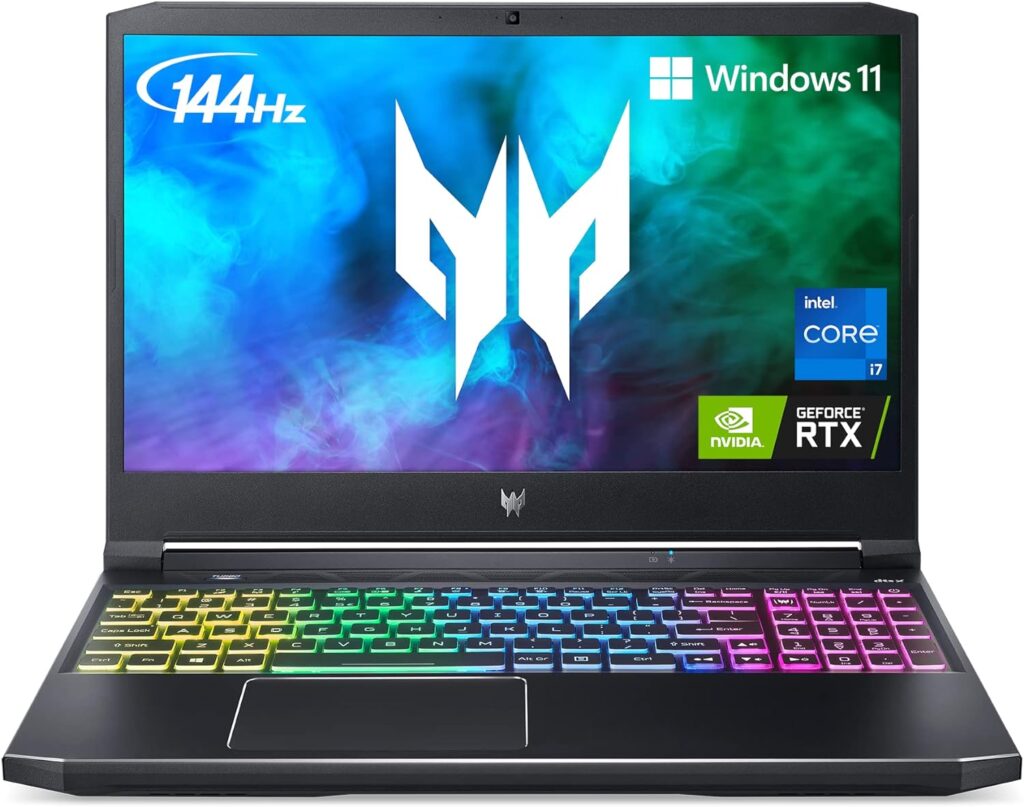
Pros
- Powerful Processing: Typically comes with high-end Intel Core i7 or i9 processors, offering robust performance for gaming and demanding applications.
- Superior Graphics: Equipped with NVIDIA GeForce RTX series GPUs, providing excellent graphics performance for gaming, video editing, and 3D rendering.
- High-Refresh Rate Display: Often features a Full HD display with a high refresh rate (e.g., 144Hz or 240Hz), ensuring smooth and clear visuals during fast-paced games and videos.
- Enhanced Cooling System: Includes advanced cooling technology, such as AeroBlade 3D fans, to efficiently manage heat and maintain performance.
- Expandable Storage and Memory: Usually offers options to expand RAM and storage, catering to future upgradeability needs.
- RGB Keyboard: Features customizable RGB backlit keyboards, adding to the gaming aesthetic and user experience.
Cons
- Bulk and Weight: Generally heavier and larger than more portable laptops, making it less convenient for frequent travel.
- Battery Life: High-performance components often result in shorter battery life, a common trade-off in gaming laptops.
- Fan Noise: Under heavy load, the cooling fans can get quite loud, which might be distracting in quieter environments.
- Price Point: High-end models can be quite expensive, making them a significant investment.
- Design Aesthetics: The gaming-oriented design might not appeal to everyone, especially for those seeking a more understated look.
3. ASUS TUF Dash 15
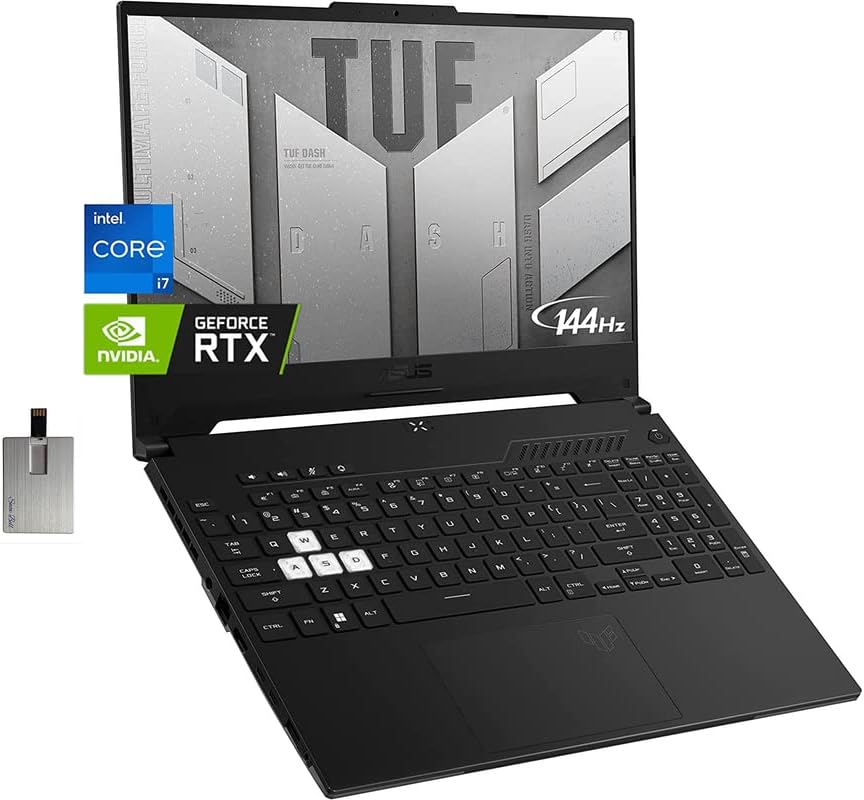
Pros
- High-Performance CPU: Often equipped with powerful processors like the Intel Core i7 series, offering excellent performance for gaming, multitasking, and demanding applications.
- Dedicated Graphics: Comes with NVIDIA GeForce RTX graphics, providing high-quality visuals for gaming and graphic-intensive tasks.
- Fast Refresh Rate Display: Usually features a display with a high refresh rate (e.g., 144Hz), enhancing the gaming experience with smoother visuals.
- Portable Design: Known for a more compact and lighter build compared to traditional gaming laptops, enhancing portability.
- Durable Build: TUF (The Ultimate Force) series is designed for durability, meeting various MIL-STD-810 standards for toughness.
- Good Thermal Management: Efficient cooling systems are a staple, ensuring stable performance during extended gaming sessions.
Cons
- Battery Life: As with many gaming laptops, battery life can be limited when running high-performance tasks.
- Display Brightness and Color Accuracy: Some models might have displays that are not as bright or color-accurate as premium gaming or professional laptops.
- Keyboard and Touchpad: The keyboard and touchpad might offer a less premium feel compared to high-end gaming laptops.
- Fan Noise: Under heavy load, the fans can be noticeably loud, which might be a concern in quiet environments.
- Limited Upgradability: Some models may have limited options for upgrading components like RAM and storage.
4. Microsoft Surface Pro 7
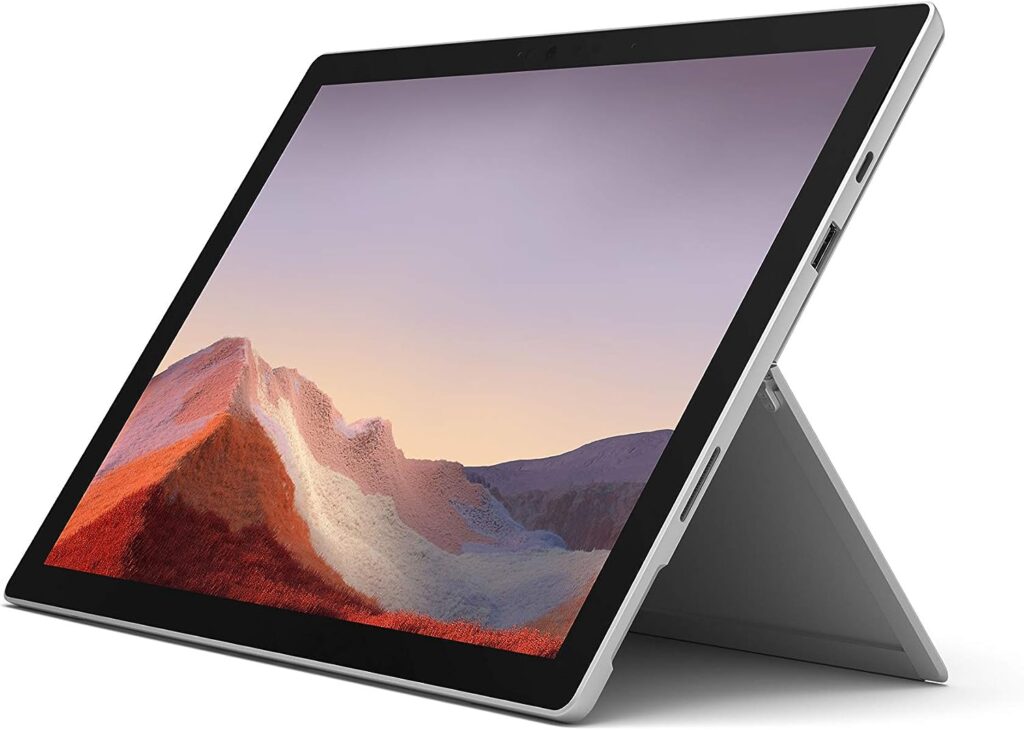
Pros
- Versatile 2-in-1 Design: The Surface Pro 7 serves as both a tablet and a laptop, offering flexibility for various use cases, from note-taking to professional work.
- Portable and Lightweight: Its slim and light design makes it highly portable, perfect for on-the-go use.
- Touch Screen with Surface Pen Support: The high-resolution PixelSense touch display is compatible with the Surface Pen, providing a natural and responsive experience for drawing and note-taking.
- Good Performance for Everyday Tasks: Equipped with Intel Core processors (i3, i5, i7 options), it handles everyday computing tasks efficiently.
- Decent Battery Life: Offers a reasonable battery life, suitable for a full day of typical usage.
- Built-in Kickstand: The adjustable kickstand provides versatile stand modes for different uses, enhancing its functionality as a tablet.
Cons
- Limited Ports: Comes with a limited number of ports, which might require users to invest in additional adapters or docking stations.
- Not Ideal for High-End Gaming or Intensive Graphic Work: The integrated graphics and processor are not suited for demanding gaming or professional-grade graphic design.
- Surface Pen and Type Cover Sold Separately: Additional cost for the full experience as these accessories are essential for maximizing its capabilities.
- Price Point: Can be relatively expensive, especially when factoring in the cost of necessary accessories.
- Limited Upgradability: The hardware components like RAM and SSD are not user-upgradable.
5. Asus ROG Strix G16
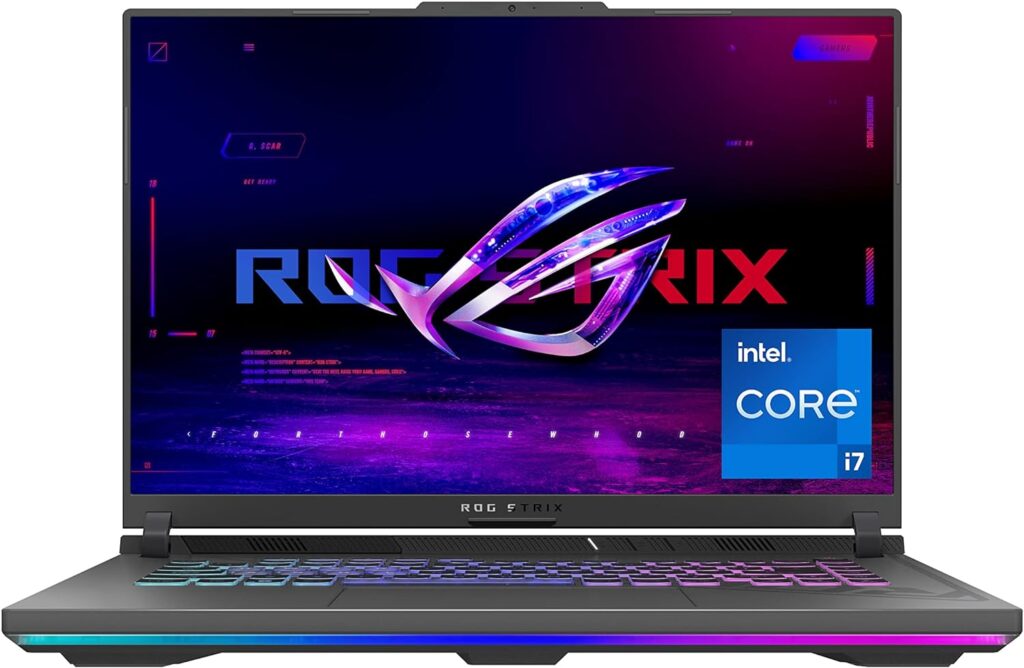
Pros
- High-End Performance: Typically comes with powerful processors like Intel Core i7 or i9, or AMD Ryzen 7 or 9, offering top-notch performance for gaming and intensive tasks.
- Advanced Graphics: Equipped with high-end NVIDIA GeForce RTX GPUs, providing excellent graphics performance for demanding games and professional graphic work.
- High-Refresh-Rate Display: Often features displays with very high refresh rates (144Hz or higher), providing smooth and responsive visuals, crucial for competitive gaming.
- Robust Cooling System: Includes advanced cooling technologies, such as liquid metal and multiple fan designs, ensuring optimal performance during extended gaming sessions.
- Customizable RGB Lighting: Offers extensive RGB lighting customization, enhancing the gaming aesthetic.
- Premium Build Quality: Known for its solid and stylish design, often with a durable build that can handle the rigors of heavy use.
Cons
- Bulkiness and Weight: These laptops tend to be bulkier and heavier, impacting their portability.
- Battery Life: High-performance components usually result in shorter battery life, making frequent charging necessary.
- Fan Noise: The advanced cooling systems can be quite loud, especially under heavy load, which might be disruptive in quiet environments.
- Cost: High-end models come with a premium price tag.
- Overkill for Average Users: For those who don’t require such high performance, these laptops might offer more power than necessary, leading to an unnecessary increase in cost.
6. MSI P65 Creator
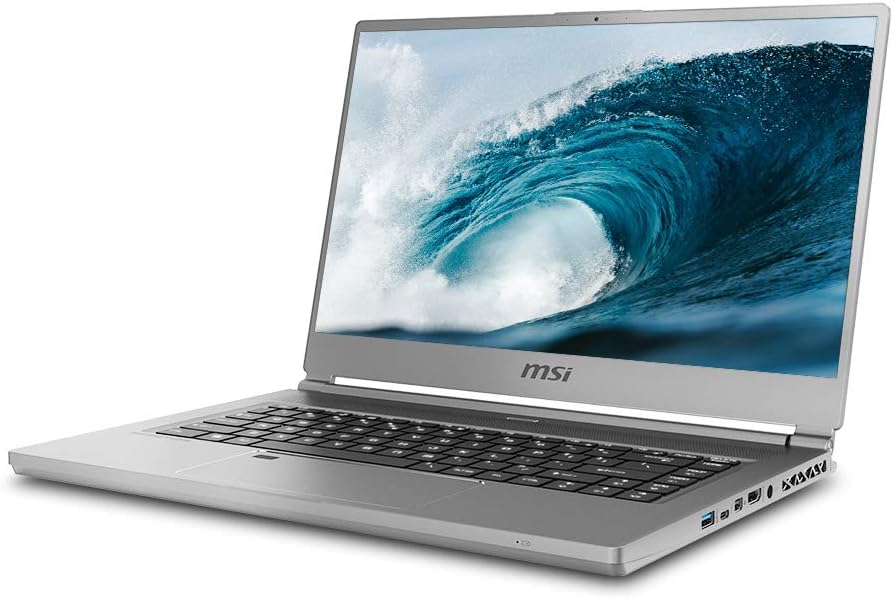
Pros
- Powerful Processing: Typically equipped with high-end Intel Core i7 or i9 processors, the MSI P65 Creator offers robust performance suitable for creative software, multitasking, and demanding applications.
- High-Quality Graphics: Often includes NVIDIA GeForce RTX graphics, providing strong performance for graphic design, video editing, and moderate gaming.
- Sleek and Portable Design: Known for its slim, lightweight design, making it an excellent choice for professionals on the go.
- Vivid Display: Usually features a high-resolution display with good color accuracy, beneficial for creative work such as photo and video editing.
- Solid Build Quality: Generally offers a durable build with premium materials, providing a sense of reliability and longevity.
- Good Array of Ports: Typically includes a versatile range of ports for connectivity, accommodating various peripherals and devices.
Cons
- Price: Positioned as a premium laptop, it can be quite expensive, especially with higher configurations.
- Battery Life: While decent, the battery life may not last all day under heavy usage, necessitating regular access to a power source.
- Cooling System: Under heavy load, the laptop can get quite warm, and the fans may be noticeably loud.
- Keyboard and Touchpad: The keyboard and touchpad might not be as comfortable or responsive as some other high-end laptops.
- Limited Upgradability: Like many ultrabooks, the upgradability options for RAM and storage might be limited or non-existent.
7. Dell XPS 17
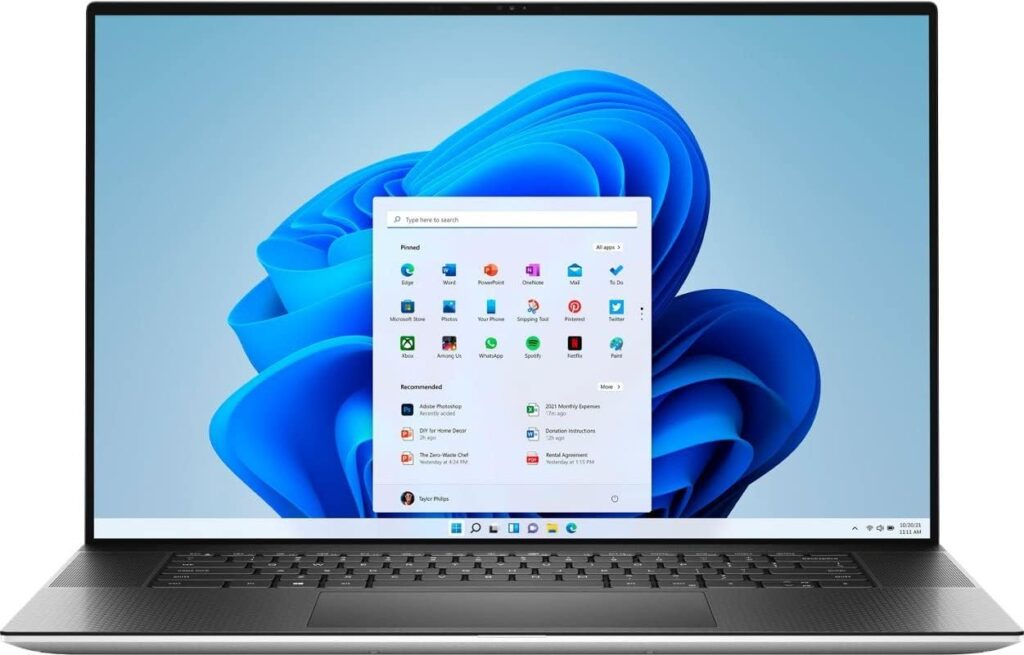
Pros
- Large, High-Quality Display: The XPS 17 typically features a large 17-inch screen with high resolution, offering excellent visual clarity and color accuracy, ideal for professional photo and video editing.
- Powerful Performance: Equipped with high-end Intel Core processors, the XPS 17 can handle demanding applications and multitasking with ease.
- Premium Build Quality: Known for its sturdy, premium build and sleek design, making it a durable and stylish choice.
- Exceptional Graphics: Often includes powerful NVIDIA GeForce graphics, suitable for demanding graphic tasks, video editing, and casual gaming.
- Good Array of Ports: Typically offers a variety of ports including Thunderbolt, USB-C, and more, providing excellent connectivity options.
- Impressive Audio Quality: The speakers usually provide rich and clear sound, enhancing the multimedia experience.
Cons
- Price: As a premium laptop, the XPS 17 comes with a high price tag, especially for higher configurations.
- Weight and Size: Being a 17-inch laptop, it is relatively bulky and heavy, affecting portability.
- Battery Life: While decent, the battery life can be quickly consumed by the powerful hardware and large screen, especially under heavy use.
- Heat Management: Under intense workload, the laptop can get quite warm, and the cooling system might be audibly noticeable.
- Webcam Quality: Despite its high-end features, the webcam quality might not be up to par with the rest of the laptop’s premium aspects.
Conclusion: Finding Your Perfect Revit Companion
Choosing the right laptop for Revit in 2024 is a crucial step in empowering your architectural journey. It’s about finding a balance between power, portability, budget, and your unique needs as a student or professional. The perfect laptop is one that seamlessly integrates into your workflow, enhancing your productivity and creativity in Revit.
Our guide has aimed to provide a comprehensive overview to assist you in this important decision. However, the quest for the ideal tech companion doesn’t end here. For a broader exploration of suitable laptops catering specifically to architecture students, visit our comprehensive guide on laptops for architecture students. This resource is designed to provide further insights and options, ensuring you are well-equipped for your architectural endeavors.
Technology in the realm of architecture is ever-evolving. Staying updated with the latest advancements and laptop features can significantly enhance your experience with Revit. We hope this guide has been a valuable tool in your journey to find the laptop that’s not just a tool, but a key to unlocking your full potential in the architectural world.
Happy designing, and here’s to finding your ideal partner in creation!

